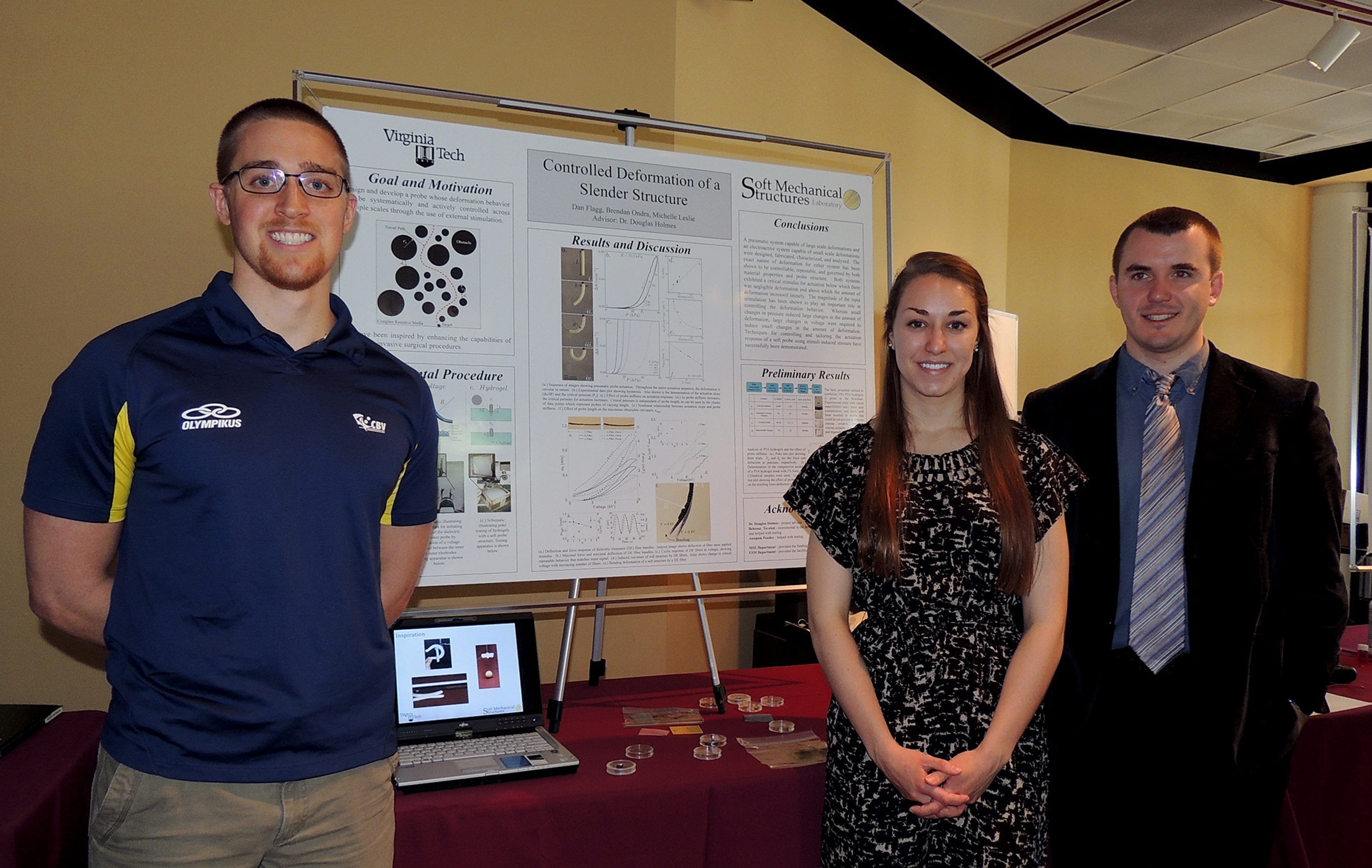Materials and science engineering student team wins international competition

Three Virginia Tech College of Engineering alumni have won the ASM International’s 2013 Undergraduate Design Competition, based on a project they completed as seniors in the Department of Materials Science and Engineering.
This was the department’s first time entering the competition held by the society, officially known as ASM International. The poster project stems, entitled “Controlled Deformation of a Slender Structure,” stems from an ongoing senior design class experiment involving the creation of a thin polymer rod that could be used as a probe when inserted into a biological tissue substitute such as gelatin, and then maneuvered and controlled by an outside source such as heat, electric voltage, or light.
The winning students each now graduated from the Virginia Tech College of Engineering with bachelor’s degrees in materials science and engineering. They are Daniel Flagg of Seaford, Del.; Michelle Leslie of Cleveland; and Brendan Robert Ondra of Sunderland, Mass., each working under faculty advisor Douglas Holmes, an assistant professor in the Department of Engineering Science and Mechanics, and Diane Folz, faculty advisor for the Virginia Tech Material Advantage Student Chapter in the materials and science engineering department, which oversees senior design projects for the ASM International Competition.
The team won a cash prize and will receive travel assistance to attend the Materials Science & Technology 2013 conference to be held in Montreal in October. Additionally, the materials science and engineering department will receive $500 to support future design teams.
Each of the Hokie alumni are now seeking doctoral degrees, with Flagg and Ondra both at University of Massachusetts Amherst, focusing their studies on polymer science and engineering, while Leslie is in the macromolecular science and engineering program at Case Western Reserve University.
“Being a part of this senior design team was an honor,” said Leslie. “We were able to make great progress and were prepared for the next journey in our education. With senior design projects, the materials science and engineering department is offering its students an invaluable opportunity to grow as scientists and young professionals, and I am very thankful to have had that opportunity.”
Work on the project began as a senior class study spanning two semesters, the first in-classroom proof of concept planning and the second in-lab practice of the written work. The students built the polymer rod that could be maneuvered and controlled by various means -- temperature, electric voltage or light – when inserted into a gelatin-like substance that would double as biological tissue. The research was dedicated to making the practice versatile, from probing inside a human artery to probing in soil or sand when inserted into the ground, said Holmes. The rod also could one day be used to explore damaged, dangerous areas, including those underground, if attached to the end of an exploratory unmanned robot, Holmes added.
The team’s work also won the Department of Materials Science and Engineering Outstanding Senior Design Project for 2013 this past May. It was the first time the department held such a poster competition.




